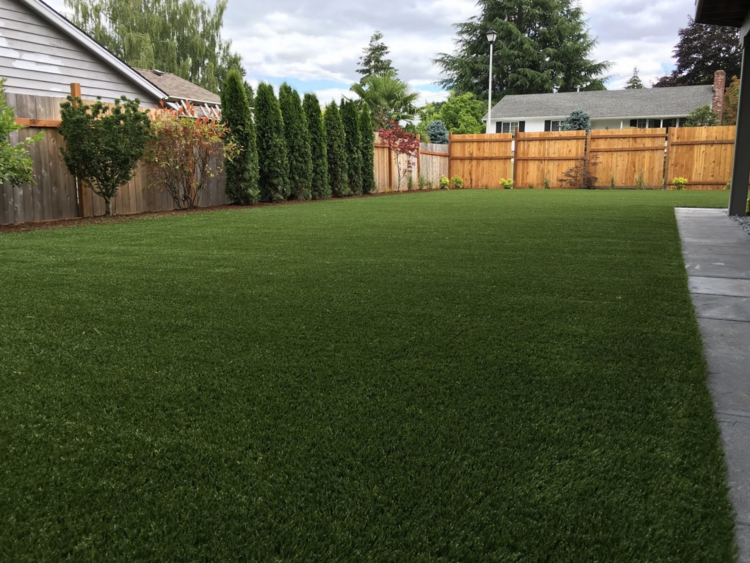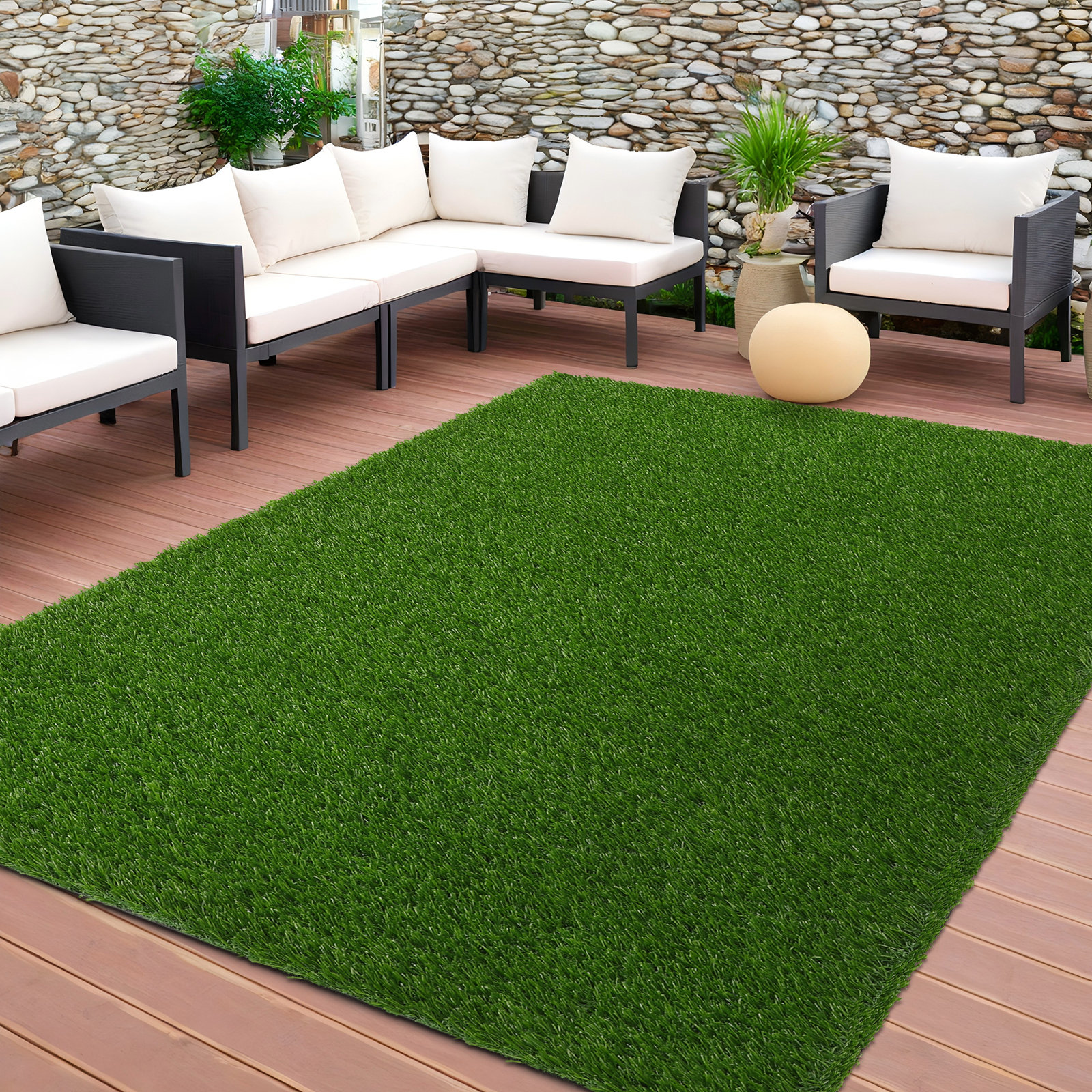Explore the Environmental Advantages of Opting for Artificial Lawn Solutions
The adoption of synthetic grass services presents an engaging chance to deal with pressing environmental obstacles. By significantly minimizing water use and decreasing the application of harmful chemicals, these alternatives not just promote lasting landscaping yet likewise safeguard regional ecological communities. Moreover, the reduced carbon footprint related to reduced upkeep activities adds to an extra lasting technique to land monitoring. The effects of these advantages prolong past plain preservation efforts, elevating concerns concerning their lasting influence on habitat preservation and total environmental balance. Exploring these dimensions discloses a complex interplay worth considering.
Water Conservation Perks
One of the most significant benefits of fabricated lawn is its capability to save water. In contrast, artificial grass does not need watering, dramatically minimizing the general demand for water sources.
By eliminating the need for regular watering, synthetic grass adds to sustainable landscape techniques and helps reduce the environmental impact of too much water consumption. In addition, the preservation of water includes the decrease of drainage, which can result in soil erosion and river pollution.
Furthermore, the setup of synthetic turf enables towns and property owners to designate water resources extra effectively, concentrating on necessary usages such as alcohol consumption water and farming. The shift in the direction of artificial grass not only promotes liable water usage but additionally lines up with wider ecological goals aimed at preserving natural deposits.
As areas significantly prioritize sustainability, the water preservation benefits of synthetic grass provide a compelling situation for its adoption in business and household landscape design tasks.
Decreased Chemical Use
The transition to synthetic grass dramatically lowers the reliance on chemical therapies generally utilized in natural lawn maintenance. Conventional grass administration normally entails the application of fertilizers, herbicides, and chemicals to advertise growth and control bugs. These chemicals can present risks to human health and wellness, neighborhood wild animals, and the environment, adding to soil and water contamination.
On the other hand, synthetic grass gets rid of the need for these unsafe materials. As soon as mounted, it requires very little maintenance, mostly consisting of routine cleansing and seldom infill replenishment. This reduction in chemical use not just benefits the instant environment yet also contributes to broader ecological stability. By lessening the release of artificial compounds into the environment, synthetic grass advertises much healthier dirt and water supply.
In addition, the absence of chemical runoff connected with man-made turf installments aids safeguard neighborhood rivers from pollution, sustaining water life and maintaining biodiversity. Arizona turf. As communities significantly prioritize sustainable techniques, going with synthetic grass provides a practical service that lines up with ecological conservation goals. With this change, property owners can delight in lavish environment-friendly rooms without jeopardizing environmental wellness, leading the way for a more lasting future
Reduced Carbon Impact

In addition, the installation of synthetic grass can lead to significant water preservation. All-natural yards call for substantial quantities of water for watering, which not just adds to the carbon impact linked with water removal and therapy but additionally stress regional water sources. In comparison, artificial lawn needs very little upkeep, requiring no watering, therefore substantially minimizing water use and its linked power costs.
Additionally, the durability of synthetic lawn adds to its decreased carbon influence. With a life expectancy of up to 15 years or even more, the requirement for regular replacements is lessened, resulting in less waste and reduced power consumption in production and throwing away standard yard alternatives. In general, man-made turf provides a lasting option for eco mindful landscaping.
Habitat Preservation
Habitat conservation is a crucial consideration in the discussion over landscaping choices, especially when comparing artificial turf to natural turf. Natural grass lawns commonly need substantial upkeep, including the use of fertilizers, chemicals, and herbicides, which can adversely influence regional ecosystems. These chemicals can leach into the soil and rivers, hurting indigenous vegetation and animals and interrupting neighborhood habitats.
In comparison, synthetic grass presents a chance to reduce the environmental impact of landscaping. By going with artificial turf, home owners can reduce the disruption of all-natural habitats associated with standard yard care methods. Fabricated lawn removes the need for damaging click for info chemicals, thereby shielding nearby wildlife and preserving the integrity of bordering ecosystems. Additionally, the setup of synthetic grass can bring about the conversion of former grass areas right into even more biodiverse landscapes, such as pollinator gardens or native plant areas, which can sustain regional wildlife.
Eventually, the transition to man-made grass not just preserves water and lowers maintenance initiatives but also promotes a more harmonious connection in between human tasks and the natural surroundings, advertising habitat preservation in the procedure.
Long-Term Sustainability
Lasting sustainability is a vital aspect in assessing the advantages of artificial turf over standard grass lawns. One of one of the most significant advantages of man-made grass is its sturdiness; it can last approximately 15-20 years with marginal upkeep, whereas all-natural turf needs regular reseeding and replacement. This long life reduces the demand for consistent sources, such as water, fertilizers, and chemicals, which are necessary for preserving a healthy yard yard.
Furthermore, man-made lawn adds to a decrease in carbon exhausts connected with yard treatment devices. Standard grass often require gas-powered mowers, leaners, and blowers, every one of which add to air pollution. Turf installation phoenix az. In comparison, synthetic grass eliminates the need for such tools, advertising a cleaner setting
In addition, the production of synthetic grass significantly utilizes recycled materials, improving its sustainability profile. As makers take on green practices, the ecological impact of synthetic grass remains to diminish.

Final Thought
The fostering of synthetic turf options provides considerable environmental benefits, including considerable water conservation, lowered reliance on dangerous chemicals, and a reduced carbon footprint. Synthetic grass help in maintaining natural habitats by lessening land disturbance and advertising long-term sustainability through the use of sturdy materials. Jointly, these factors highlight the possibility of synthetic lawn to add look at this site positively to ecological health and wellness and provide a practical alternative to traditional landscape design techniques in an increasingly resource-conscious globe.
In comparison, man-made grass does not require watering, considerably lowering the total need for water resources. By decreasing the release of synthetic substances right into the environment, artificial lawn promotes healthier dirt and water systems.
Moreover, the installment of artificial grass can result in substantial water preservation. In comparison, synthetic turf needs minimal upkeep, needing no watering, consequently significantly reducing water usage and its associated energy prices.
